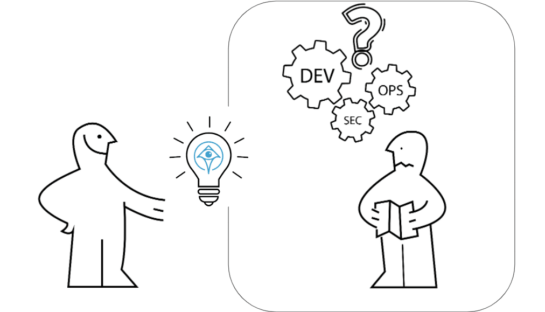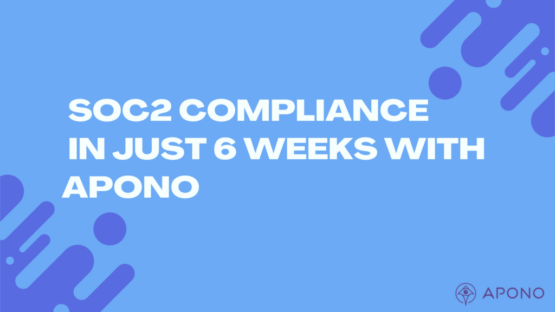Access Management for DevOps: Securing CI/CD Pipelines

Ofir Stein
November 26, 2024
Recent studies indicate that more than 80% of organizations have experienced security breaches related to their CI/CD processes, highlighting the critical need for comprehensive access management strategies.
As development teams embrace automation and rapid deployment cycles, the attack surface for potential security vulnerabilities expands exponentially. The CI/CD pipeline presents a particularly attractive target for malicious actors. By compromising this crucial infrastructure, attackers can potentially inject malicious code, exfiltrate sensitive data, or disrupt entire development workflows. Consequently, implementing stringent access controls and security measures throughout the CI/CD pipeline has become a top priority for organizations aiming to safeguard their digital assets and maintain customer trust.
As we navigate through the complexities of securing CI/CD pipelines, it’s crucial to recognize that access management is not a one-time implementation but an ongoing process that requires continuous refinement and adaptation. With the right strategies in place, organizations can strike a balance between security and agility, fostering innovation while maintaining the integrity of their software delivery processes.
Understanding CI/CD Pipeline Security
The continuous integration and continuous delivery (CI/CD) pipeline forms the backbone of modern software development practices, enabling teams to rapidly iterate and deploy code changes with unprecedented efficiency. However, this increased velocity also introduces new security challenges that organizations must address to protect their digital assets and maintain the integrity of their software delivery process.
At its core, CI/CD pipeline security encompasses a wide range of practices and technologies designed to safeguard each stage of the software development lifecycle. This includes securing code repositories, build processes, testing environments, and deployment mechanisms. By implementing robust security measures throughout the pipeline, organizations can minimize the risk of unauthorized access, data breaches, and the introduction of vulnerabilities into production systems.
One of the primary objectives of CI/CD pipeline security is to ensure the confidentiality, integrity, and availability of code and associated resources. This involves implementing strong access controls, encryption mechanisms, and monitoring systems to detect and respond to potential security incidents in real-time. Additionally, organizations must focus on securing the various tools and integrations that comprise their CI/CD infrastructure, as these components can often serve as entry points for attackers if left unprotected.
Another critical aspect of CI/CD pipeline security is the concept of “shifting left” – integrating security practices earlier in the development process. This approach involves incorporating security testing, vulnerability scanning, and compliance checks into the pipeline itself, allowing teams to identify and address potential issues before they reach production environments. By embedding security into the CI/CD workflow, organizations can reduce the likelihood of vulnerabilities making their way into released software and minimize the cost and effort required to remediate security issues post-deployment.
It’s important to note that CI/CD pipeline security is not solely a technical challenge but also requires a cultural shift within organizations. DevOps teams must adopt a security-first mindset, with developers, operations personnel, and security professionals working collaboratively to address potential risks throughout the software development lifecycle. This collaborative approach, often referred to as DevSecOps, ensures that security considerations are integrated into every aspect of the CI/CD process, from initial code commits to final deployment and beyond.
As we delve deeper into the specifics of access management for DevOps and securing CI/CD pipelines, it’s crucial to keep in mind the overarching goal of maintaining a balance between security and agility. While robust security measures are essential, they should not impede the speed and efficiency that CI/CD pipelines are designed to deliver. By adopting a holistic approach to pipeline security, organizations can protect their valuable assets while still reaping the benefits of modern software development practices.
Key Components of Access Management in DevOps
By implementing robust access control mechanisms, organizations can ensure that only authorized individuals and processes have the necessary permissions to interact with various components of the pipeline.
Identity and Authentication
Implementing strong identity management practices is crucial for maintaining the security and integrity of the pipeline. This involves:
- User Identity Management: Establishing and maintaining accurate user profiles, including roles, responsibilities, and associated access rights.
- Service Account Management: Creating and managing dedicated service accounts for automated processes and integrations, ensuring they have the minimum necessary permissions.
- Multi-Factor Authentication (MFA): Enforcing MFA for all user accounts to add an extra layer of security beyond traditional username and password combinations.
- Single Sign-On (SSO): Implementing SSO solutions to streamline authentication processes across multiple tools and platforms while maintaining security.
Authentication mechanisms verify the identity of users and services attempting to access pipeline resources. Modern authentication protocols, such as OAuth 2.0 and OpenID Connect, provide secure and standardized methods for verifying identities and granting access tokens. These protocols enable seamless integration with various CI/CD tools and cloud services while maintaining a high level of security.
Authorization and Access Control
Once identities are established and authenticated, the next critical component is authorization – determining what actions and resources each identity is permitted to access within the CI/CD pipeline. Effective authorization strategies include:
- Role-Based Access Control (RBAC): Assigning permissions based on predefined roles, allowing for easier management of access rights across large teams and complex environments.
- Attribute-Based Access Control (ABAC): Utilizing dynamic attributes (such as time, location, or device type) to make fine-grained access decisions in real-time.
- Least Privilege Principle: Granting users only the minimum level of access required to perform their tasks, reducing the potential impact of compromised accounts.
- Just-In-Time (JIT) Access: Providing temporary, elevated permissions for specific tasks or time periods, minimizing the duration of expanded access rights.
Implementing these authorization mechanisms requires careful planning and ongoing management to ensure that access rights remain appropriate as team structures and project requirements evolve.
Secrets Management
CI/CD pipelines often require access to sensitive information such as API keys, database credentials, and encryption keys. Proper secrets management is essential for protecting these valuable assets:
- Centralized Secrets Storage: Utilizing dedicated secrets management tools or services to securely store and manage sensitive information.
- Dynamic Secrets: Generating short-lived, temporary credentials for accessing resources, reducing the risk of long-term credential exposure.
- Encryption at Rest and in Transit: Ensuring that secrets are encrypted both when stored and when transmitted between pipeline components.
- Rotation and Revocation: Implementing automated processes for regularly rotating secrets and quickly revoking compromised credentials.
By centralizing secrets management and implementing strong encryption and access controls, organizations can significantly reduce the risk of unauthorized access to sensitive information within their CI/CD pipelines.
Audit Logging and Monitoring
Comprehensive logging and monitoring capabilities are crucial for maintaining visibility into access patterns and detecting potential security incidents within the CI/CD pipeline:
- Centralized Logging: Aggregating logs from all pipeline components into a centralized system for easier analysis and correlation.
- Access Auditing: Recording detailed information about authentication attempts, access requests, and resource usage throughout the pipeline.
- Real-Time Monitoring: Implementing automated monitoring systems to detect and alert on suspicious activities or policy violations.
- Compliance Reporting: Generating reports and dashboards to demonstrate compliance with relevant security standards and regulations.
These logging and monitoring capabilities not only aid in detecting and responding to security incidents but also provide valuable insights for optimizing access management policies and identifying areas for improvement within the CI/CD pipeline.
By focusing on these key components of access management – identity and authentication, authorization and access control, secrets management, and audit logging and monitoring – DevOps teams can establish a robust security foundation for their CI/CD pipelines.
Implementing Least Privilege Access
The principle of least privilege is a fundamental concept in access management that plays a crucial role in securing CI/CD pipelines within DevOps environments. This approach involves granting users, processes, and systems only the minimum level of access rights necessary to perform their required tasks. By limiting access to the bare essentials, organizations can significantly reduce the potential impact of security breaches and minimize the risk of unauthorized actions within the pipeline.
Benefits of Least Privilege Access
Implementing least privilege access in CI/CD pipelines offers several key advantages:
- Reduced Attack Surface: By limiting the scope of access for each user or process, the overall attack surface of the pipeline is minimized, making it more challenging for attackers to exploit vulnerabilities.
- Improved Accountability: With granular access controls in place, it becomes easier to track and attribute actions within the pipeline, enhancing overall accountability and facilitating more effective incident response.
- Enhanced Compliance: Many regulatory frameworks and industry standards require the implementation of least privilege access. Adopting this principle helps organizations meet compliance requirements more easily.
- Simplified Auditing: Clearly defined and limited access rights make it easier to conduct regular access reviews and audits, ensuring that permissions remain appropriate over time.
- Mitigation of Insider Threats: By restricting access to sensitive resources and operations, the potential damage that could be caused by malicious insiders or compromised accounts is significantly reduced.
Strategies for Implementing Least Privilege Access
To effectively implement least privilege access within CI/CD pipelines, organizations should consider the following strategies:
- Role-Based Access Control (RBAC):
- Define clear roles based on job functions and responsibilities within the DevOps team.
- Assign minimum necessary permissions to each role, avoiding overly broad or generic access rights.
- Regularly review and update role definitions to ensure they remain aligned with evolving team structures and project requirements.
- Just-In-Time (JIT) Access:
- Implement systems that provide temporary, elevated access for specific tasks or time periods.
- Require users to request and justify additional permissions when needed, with automated approval workflows.
- Automatically revoke elevated access once the specified task or time period has concluded.
- Separation of Duties:
- Divide critical operations into distinct steps, each requiring different access rights.
- Ensure that no single individual has complete control over sensitive processes within the pipeline.
- Implement approval workflows for high-risk actions, requiring multiple approvers before execution.
- Regular Access Reviews:
- Conduct periodic reviews of user access rights and permissions across all pipeline components.
- Implement automated tools to detect and flag unused or excessive permissions.
- Establish a formal process for revoking or adjusting access rights when roles change or employees leave the organization.
- Privileged Access Management (PAM):
- Implement dedicated PAM solutions to manage and monitor access to highly privileged accounts within the CI/CD infrastructure.
- Enforce strong authentication mechanisms, such as multi-factor authentication, for privileged access.
- Utilize session recording and monitoring for critical administrative actions within the pipeline.
- Automated Provisioning and De-provisioning:
- Develop automated processes for granting and revoking access rights based on user lifecycle events (e.g., onboarding, role changes, offboarding).
- Integrate access management systems with HR and identity management platforms to ensure timely updates to access rights.
- Continuous Monitoring and Alerting:
- Implement real-time monitoring of access patterns and user behavior within the CI/CD pipeline.
- Set up alerts for suspicious activities, such as attempts to access resources beyond assigned permissions or unusual login patterns.
- Regularly analyze access logs to identify potential security risks or areas for improvement in access policies.
Challenges and Considerations
While implementing least privilege access offers significant security benefits, it’s important to be aware of potential challenges:
- Balancing Security and Productivity: Overly restrictive access controls can hinder productivity and create frustration among team members. Finding the right balance between security and usability is crucial.
- Complexity Management: As environments grow more complex, managing fine-grained access controls can become increasingly challenging. Robust tools and automation are essential for scaling least privilege implementations.
- Legacy Systems Integration: Older systems or tools within the CI/CD pipeline may not support granular access controls, requiring additional measures or compensating controls to maintain security.
- Cultural Resistance: Some team members may resist changes to their access rights or view additional security measures as obstacles. Clear communication and education are vital for successful adoption.
- Dynamic Environments: CI/CD pipelines often involve rapidly changing environments and resources. Access management systems must be flexible enough to adapt to these dynamic conditions while maintaining security.
How Apono Helps
Apono is designed to simplify and enhance security for CI/CD pipelines in DevOps by providing granular, automated access management. Here’s how Apono contributes to securing CI/CD pipelines:
1. Temporary and Least-Privilege Access
Apono enables developers to access resources (e.g., databases, cloud environments, or APIs) on a need-to-use basis and for limited timeframes. This reduces the risk of unauthorized access and minimizes the impact of compromised credentials.
Role-based access control (RBAC) and policies are applied to enforce least-privilege principles, ensuring that no entity has unnecessary or excessive permissions.
2. Secure Secrets Management
CI/CD pipelines often require secrets like API keys, database credentials, and tokens. Apono integrates with secret management tools and helps secure these secrets by automating their retrieval only at runtime.
Secrets are securely rotated and never hardcoded into repositories or exposed in logs, reducing the attack surface.
3. Integration with DevOps Tools
Apono integrates seamlessly with popular CI/CD tools such as Jenkins, GitLab CI/CD, GitHub Actions, and Azure DevOps. This ensures that security is embedded in the workflow without disrupting developer productivity.
Automated approval flows within pipelines ensure that critical steps requiring elevated permissions are securely executed without manual intervention.




